Taketo Akama
Predicting Artificial Neural Network Representations to Learn Recognition Model for Music Identification from Brain Recordings
Dec 20, 2024Abstract:Recent studies have demonstrated that the representations of artificial neural networks (ANNs) can exhibit notable similarities to cortical representations when subjected to identical auditory sensory inputs. In these studies, the ability to predict cortical representations is probed by regressing from ANN representations to cortical representations. Building upon this concept, our approach reverses the direction of prediction: we utilize ANN representations as a supervisory signal to train recognition models using noisy brain recordings obtained through non-invasive measurements. Specifically, we focus on constructing a recognition model for music identification, where electroencephalography (EEG) brain recordings collected during music listening serve as input. By training an EEG recognition model to predict ANN representations-representations associated with music identification-we observed a substantial improvement in classification accuracy. This study introduces a novel approach to developing recognition models for brain recordings in response to external auditory stimuli. It holds promise for advancing brain-computer interfaces (BCI), neural decoding techniques, and our understanding of music cognition. Furthermore, it provides new insights into the relationship between auditory brain activity and ANN representations.
Music Foundation Model as Generic Booster for Music Downstream Tasks
Nov 05, 2024

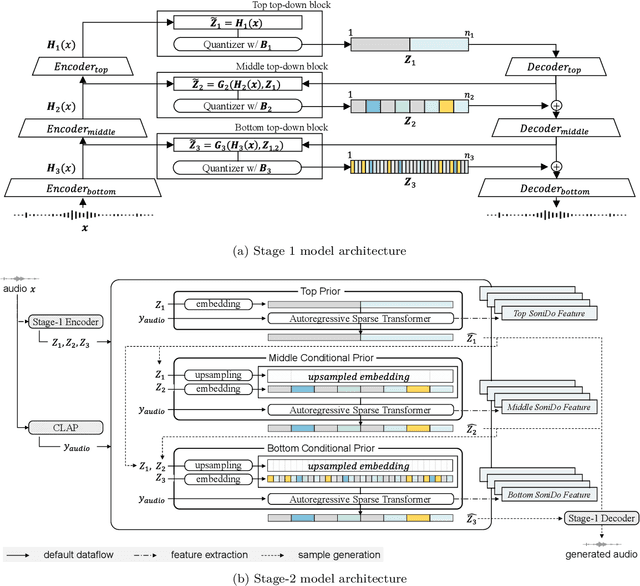

Abstract:We demonstrate the efficacy of using intermediate representations from a single foundation model to enhance various music downstream tasks. We introduce SoniDo, a music foundation model (MFM) designed to extract hierarchical features from target music samples. By leveraging hierarchical intermediate features, SoniDo constrains the information granularity, leading to improved performance across various downstream tasks including both understanding and generative tasks. We specifically evaluated this approach on representative tasks such as music tagging, music transcription, music source separation, and music mixing. Our results reveal that the features extracted from foundation models provide valuable enhancements in training downstream task models. This highlights the capability of using features extracted from music foundation models as a booster for downstream tasks. Our approach not only benefits existing task-specific models but also supports music downstream tasks constrained by data scarcity. This paves the way for more effective and accessible music processing solutions.
Annotation-Free MIDI-to-Audio Synthesis via Concatenative Synthesis and Generative Refinement
Oct 22, 2024
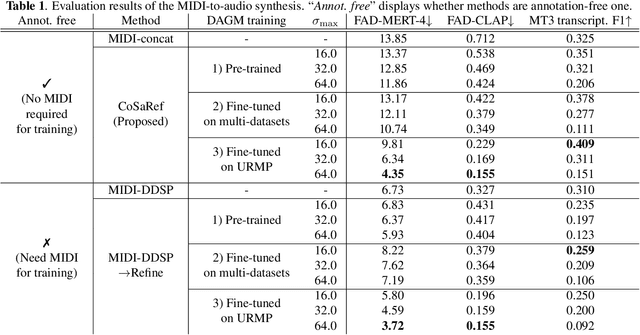
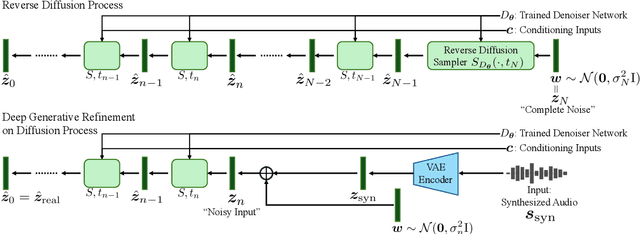
Abstract:Recent MIDI-to-audio synthesis methods have employed deep neural networks to successfully generate high-quality and expressive instrumental tracks. However, these methods require MIDI annotations for supervised training, limiting the diversity of the output audio in terms of instrument timbres, and expression styles. We propose CoSaRef, a MIDI-to-audio synthesis method that can be developed without MIDI-audio paired datasets. CoSaRef first performs concatenative synthesis based on MIDI inputs and then refines the resulting audio into realistic tracks using a diffusion-based deep generative model trained on audio-only datasets. This approach enhances the diversity of audio timbres and expression styles. It also allows for control over the output timbre based on audio sample selection, similar to traditional functions in digital audio workstations. Experiments show that while inherently capable of generating general tracks with high control over timbre, CoSaRef can also perform comparably to conventional methods in generating realistic audio.
A Preliminary Investigation on Flexible Singing Voice Synthesis Through Decomposed Framework with Inferrable Features
Jul 12, 2024Abstract:We investigate the feasibility of a singing voice synthesis (SVS) system by using a decomposed framework to improve flexibility in generating singing voices. Due to data-driven approaches, SVS performs a music score-to-waveform mapping; however, the direct mapping limits control, such as being able to only synthesize in the language or the singers present in the labeled singing datasets. As collecting large singing datasets labeled with music scores is an expensive task, we investigate an alternative approach by decomposing the SVS system and inferring different singing voice features. We decompose the SVS system into three-stage modules of linguistic, pitch contour, and synthesis, in which singing voice features such as linguistic content, F0, voiced/unvoiced, singer embeddings, and loudness are directly inferred from audio. Through this decomposed framework, we show that we can alleviate the labeled dataset requirements, adapt to different languages or singers, and inpaint the lyrical content of singing voices. Our investigations show that the framework has the potential to reach state-of-the-art in SVS, even though the model has additional functionality and improved flexibility. The comprehensive analysis of our investigated framework's current capabilities sheds light on the ways the research community can achieve a flexible and multifunctional SVS system.
Music Proofreading with RefinPaint: Where and How to Modify Compositions given Context
Jul 12, 2024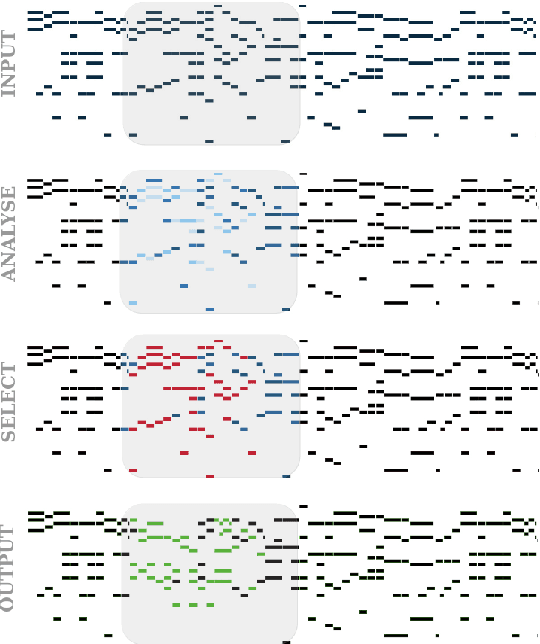
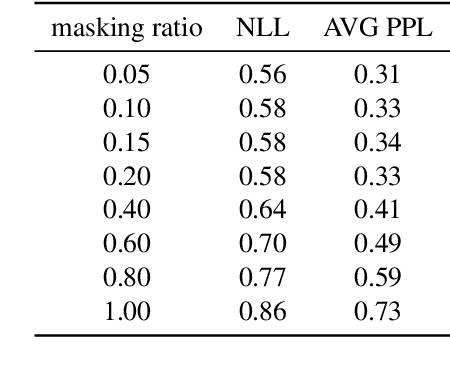
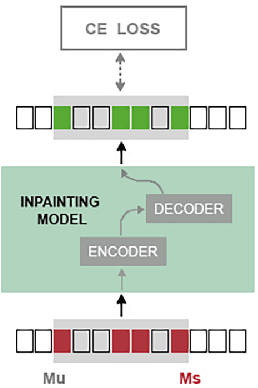
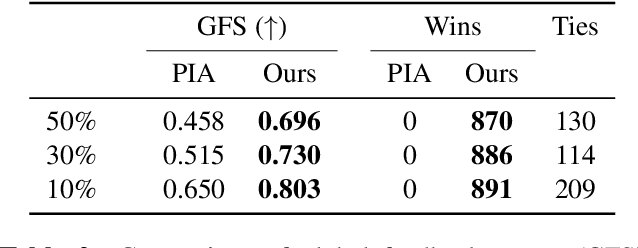
Abstract:Autoregressive generative transformers are key in music generation, producing coherent compositions but facing challenges in human-machine collaboration. We propose RefinPaint, an iterative technique that improves the sampling process. It does this by identifying the weaker music elements using a feedback model, which then informs the choices for resampling by an inpainting model. This dual-focus methodology not only facilitates the machine's ability to improve its automatic inpainting generation through repeated cycles but also offers a valuable tool for humans seeking to refine their compositions with automatic proofreading. Experimental results suggest RefinPaint's effectiveness in inpainting and proofreading tasks, demonstrating its value for refining music created by both machines and humans. This approach not only facilitates creativity but also aids amateur composers in improving their work.
Naturalistic Music Decoding from EEG Data via Latent Diffusion Models
May 17, 2024Abstract:In this article, we explore the potential of using latent diffusion models, a family of powerful generative models, for the task of reconstructing naturalistic music from electroencephalogram (EEG) recordings. Unlike simpler music with limited timbres, such as MIDI-generated tunes or monophonic pieces, the focus here is on intricate music featuring a diverse array of instruments, voices, and effects, rich in harmonics and timbre. This study represents an initial foray into achieving general music reconstruction of high-quality using non-invasive EEG data, employing an end-to-end training approach directly on raw data without the need for manual pre-processing and channel selection. We train our models on the public NMED-T dataset and perform quantitative evaluation proposing neural embedding-based metrics. We additionally perform song classification based on the generated tracks. Our work contributes to the ongoing research in neural decoding and brain-computer interfaces, offering insights into the feasibility of using EEG data for complex auditory information reconstruction.
A Computational Analysis of Lyric Similarity Perception
Apr 02, 2024Abstract:In musical compositions that include vocals, lyrics significantly contribute to artistic expression. Consequently, previous studies have introduced the concept of a recommendation system that suggests lyrics similar to a user's favorites or personalized preferences, aiding in the discovery of lyrics among millions of tracks. However, many of these systems do not fully consider human perceptions of lyric similarity, primarily due to limited research in this area. To bridge this gap, we conducted a comparative analysis of computational methods for modeling lyric similarity with human perception. Results indicated that computational models based on similarities between embeddings from pre-trained BERT-based models, the audio from which the lyrics are derived, and phonetic components are indicative of perceptual lyric similarity. This finding underscores the importance of semantic, stylistic, and phonetic similarities in human perception about lyric similarity. We anticipate that our findings will enhance the development of similarity-based lyric recommendation systems by offering pseudo-labels for neural network development and introducing objective evaluation metrics.
HyperGANStrument: Instrument Sound Synthesis and Editing with Pitch-Invariant Hypernetworks
Jan 09, 2024Abstract:GANStrument, exploiting GANs with a pitch-invariant feature extractor and instance conditioning technique, has shown remarkable capabilities in synthesizing realistic instrument sounds. To further improve the reconstruction ability and pitch accuracy to enhance the editability of user-provided sound, we propose HyperGANStrument, which introduces a pitch-invariant hypernetwork to modulate the weights of a pre-trained GANStrument generator, given a one-shot sound as input. The hypernetwork modulation provides feedback for the generator in the reconstruction of the input sound. In addition, we take advantage of an adversarial fine-tuning scheme for the hypernetwork to improve the reconstruction fidelity and generation diversity of the generator. Experimental results show that the proposed model not only enhances the generation capability of GANStrument but also significantly improves the editability of synthesized sounds. Audio examples are available at the online demo page.
Annotation-free Automatic Music Transcription with Scalable Synthetic Data and Adversarial Domain Confusion
Dec 31, 2023Abstract:Automatic Music Transcription (AMT) is a vital technology in the field of music information processing. Despite recent enhancements in performance due to machine learning techniques, current methods typically attain high accuracy in domains where abundant annotated data is available. Addressing domains with low or no resources continues to be an unresolved challenge. To tackle this issue, we propose a transcription model that does not require any MIDI-audio paired data through the utilization of scalable synthetic audio for pre-training and adversarial domain confusion using unannotated real audio. In experiments, we evaluate methods under the real-world application scenario where training datasets do not include the MIDI annotation of audio in the target data domain. Our proposed method achieved competitive performance relative to established baseline methods, despite not utilizing any real datasets of paired MIDI-audio. Additionally, ablation studies have provided insights into the scalability of this approach and the forthcoming challenges in the field of AMT research.
Automatic Piano Transcription with Hierarchical Frequency-Time Transformer
Jul 10, 2023Abstract:Taking long-term spectral and temporal dependencies into account is essential for automatic piano transcription. This is especially helpful when determining the precise onset and offset for each note in the polyphonic piano content. In this case, we may rely on the capability of self-attention mechanism in Transformers to capture these long-term dependencies in the frequency and time axes. In this work, we propose hFT-Transformer, which is an automatic music transcription method that uses a two-level hierarchical frequency-time Transformer architecture. The first hierarchy includes a convolutional block in the time axis, a Transformer encoder in the frequency axis, and a Transformer decoder that converts the dimension in the frequency axis. The output is then fed into the second hierarchy which consists of another Transformer encoder in the time axis. We evaluated our method with the widely used MAPS and MAESTRO v3.0.0 datasets, and it demonstrated state-of-the-art performance on all the F1-scores of the metrics among Frame, Note, Note with Offset, and Note with Offset and Velocity estimations.
 Add to Chrome
Add to Chrome Add to Firefox
Add to Firefox Add to Edge
Add to Edge